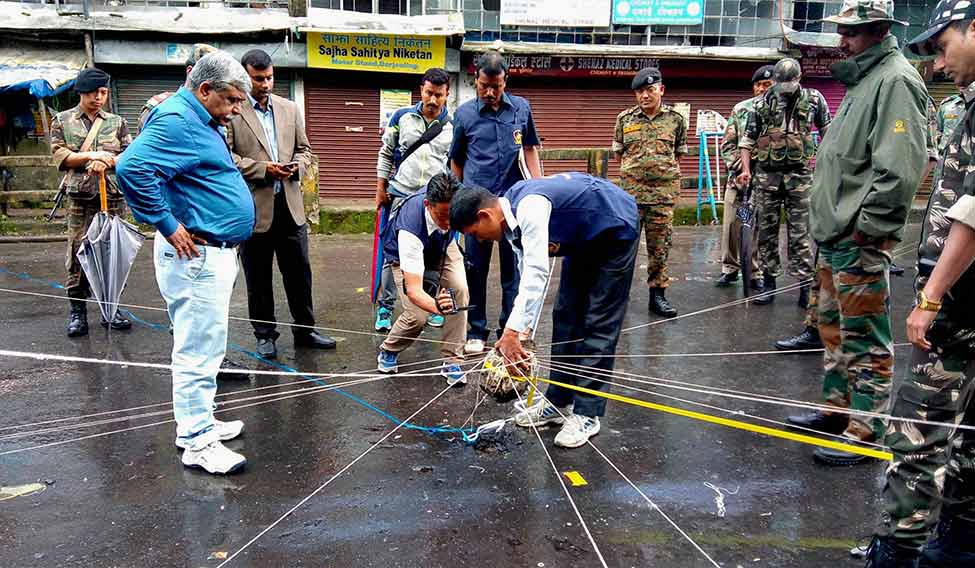For the first time in four decades, leaders of the Gorkhaland movement have been branded as terrorists by the Trinamool Congress government in West Bengal. Even Subhash Ghising, who had set up a private army, had not been branded so by the CPI(M)-led government. The Left said the movement was for separation from West Bengal, and not India.
But, the Trinamool government seems to have had enough. And, so, on August 19, Gorkha Janmukti Morcha president Bimal Gurung, general secretary Roshan Giri and other leaders—mostly central committee members—were charged under the Unlawful Activities Prevention Act (UAPA), reserved for terrorists.
As chief minister and home minister, Mamata Banerjee led the discussion in the cabinet, cleared the decks for action and issued orders to home secretary Atri Bhattacharya. In an interview with THE WEEK, North Bengal affairs minister Rabindra Nath Ghosh called GJM leaders terrorists. “They are terrorising [the people] with the help of foreign hands, and they are destabilising the peace in our state,” he said. He alleged that Nepali groups, backed by the Chinese, were behind the violence in Darjeeling.
Soon after the state unleashed the hounds, the Gorkha Liberation Army (GLA) claimed responsibility for 13 blasts that had rocked Darjeeling over three months.
Founded in 2013, the GLA began as an offshoot of the United Gorkha Revolutionary Army (UGRA), the armed wing of the United Gorkha Revolutionary Front (UGRF). Ajay Dhal, a former jawan of the Central Industrial Security Force, founded the UGRF in 2004 as a parallel to the Gorkha National Liberation Front led by Ghising. In 2007, Gurung fell out with Ghising and formed the GJM.
What disturbed the West Bengal government is the close ties that the UGRA had with the GJM. Reports suggest that GLA cadre have revived these links. And, apart from those living in Darjeeling, there are about four lakh Gorkhas in the northeast. Reportedly, the GLA has found support among the Gorkha ‘diaspora’.
In its report to the Union Government, the West Bengal government has highlighted the Nepal and China angles. Anuj Sharma, additional director general of police, said the intelligence wing of the West Bengal Police had confirmed that Nepali Maoists were targeting “government offices, installations, politicians and officials”.
Almost 200 people were killed in the Gorkhaland violence from 2006 to 2011, when the tripartite Gorkhaland Territorial Administration (GTA) agreement was signed by West Bengal, the government of India and the GJM.
Just before the GTA deal, UGRA/UGRF chief Dhal had surrendered to the Sikkim Police. In 2013, he received bail and launched a political party based in Kalimpong. “I am totally in the dark. I even don’t know who is behind this,” said Dhal, about the GLA. He attended the all-party meetings convened by Mamata Banerjee in her office recently.
However, the 13 blasts have brought back old memories. The rise of the UGRA coincided with the political movement of GJM in 2006; the rise of GLA has matched the resurgence of the GJM in June 2017. The GLA has warned that “stern military action would be taken if anyone settles for anything less than statehood in Darjeeling.”
The UGRF/UGRA was trained by militant organisations like Jewel Garlosa’s Dima Halam Daogah (DHD), and its splinter group, Pranab Nunisa’s Black Widow. Garlosa is now a BJP leader in Assam. A state intelligence branch official said, “Garlosa personally trained UGRA militants. DHD was an ally of the National Socialist Council of Nagaland, and the UGRA was trained by them, too.”
Police sources fear that the GLA is reviving the UGRA’s old inter-state and cross-border network. On June 21, Assam Rifles arrested two Nepali-speaking men who were smuggling guns into West Bengal from Arunachal Pradesh. An Assam Rifles spokesperson told THE WEEK that they later confessed that they had “received training and arms from NSCN (Isak-Muivah) on the Myanmar border”. Both were charged with UAPA.
G.M. Srivastava, former director general of Assam Police and Tripura Police, said Darjeeling’s geography made it easy for cross-border terrorists. “And, what is more dangerous for India is that more than half of Nepal is pro-China,” he said. “And, Maoist groups—except Prachanda’s, who has good relations with India—have close links with China.”
Insiders said that other than the alleged links with the GLA, Gurung had also set up the Gorkhaland Police (GP) in 2007. About 12,000 youths were recruited as GP constabulary. They managed law and order in Darjeeling, when the West Bengal Police were kept out from 2007 to 2011. After he became GTA chief in 2011, Gurung continued to keep his GP bodyguards, while Ghising accepted West Bengal Police cover. GP constables continue to guard Gurung, Giri and central committee members of the GJM.
What comes as a breather for the state government is the widening rift within the GJM. Binoy Tamang, once a close confidant of Gurung, has moved away. He attended the meeting convened by Mamata. “[Gurung] is pushing Darjeeling to the brink of disaster,” Tamang said. “So, I cannot participate in his crazy mission any more.” He also said Gurung was corrupt. “He has flats in London and Florida, and a hotel in Pokhra, Nepal,” said Tamang. “How has he become rich?”
Tamang said he was ready to fast until death for Gorkhaland, but he was no more for armed insurrection.








